🌍 Environmental Justice: Essential Concepts for Reading Comprehension
Environmental justice focuses on the fair distribution of environmental benefits and burdens across all communities, regardless of race, income, or nationality. It emphasizes the need to address systemic inequalities, protect vulnerable populations, and advocate for sustainable development. RC passages on this topic often analyze social, economic, and political dimensions of environmental challenges. Understanding these concepts enables readers to critically evaluate how justice intersects with environmental protection.
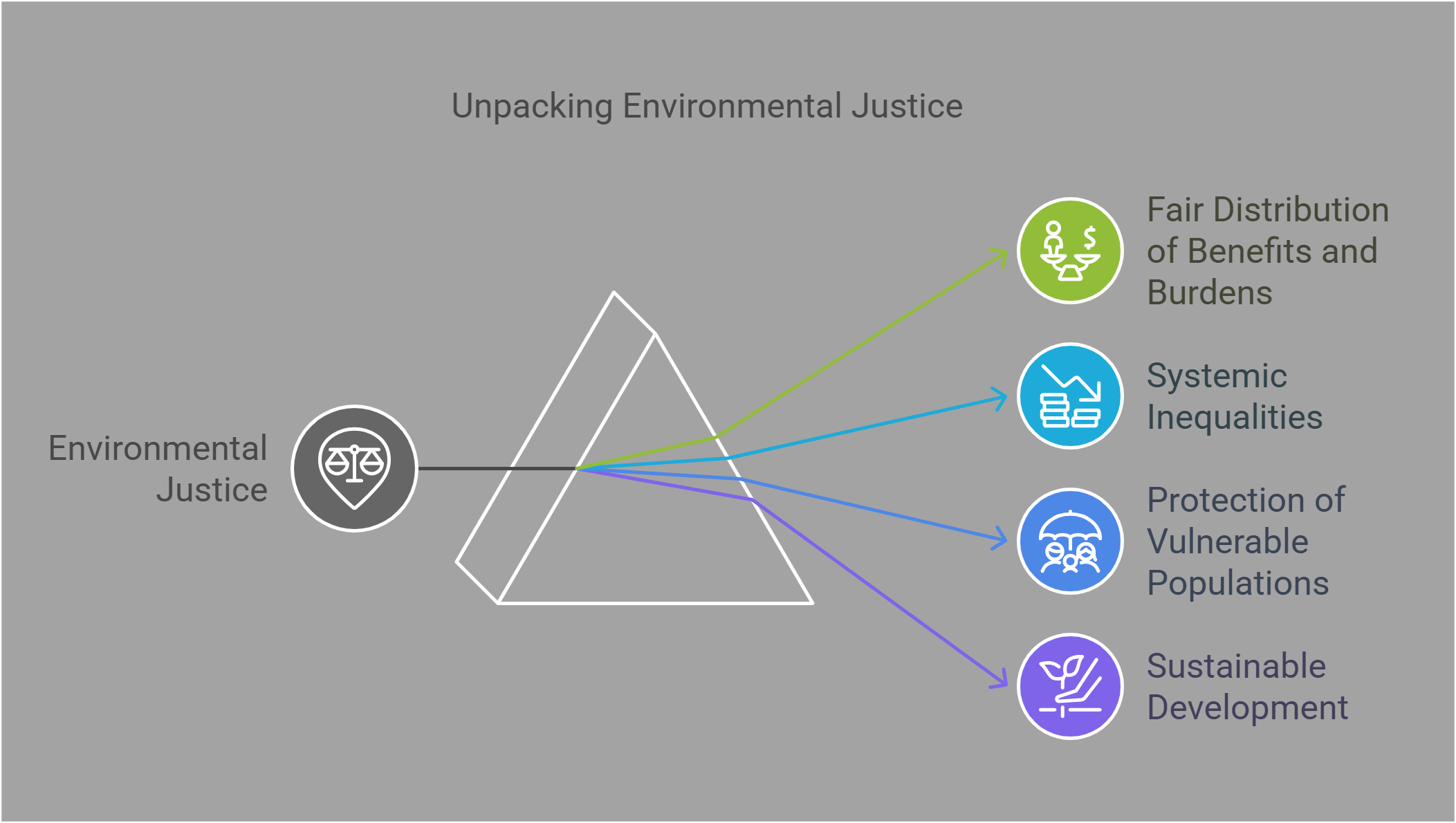
📋 Key Concepts
This guide explores the following essential concepts in environmental justice:
- Environmental Racism
- Climate Change Inequality
- Indigenous Land Rights
- Urban Pollution
- Clean Energy Access
- Waste Management Inequality
- Global vs. Local Solutions
- Ecosystem Restoration
- Policy Advocacy
- Sustainable Agriculture
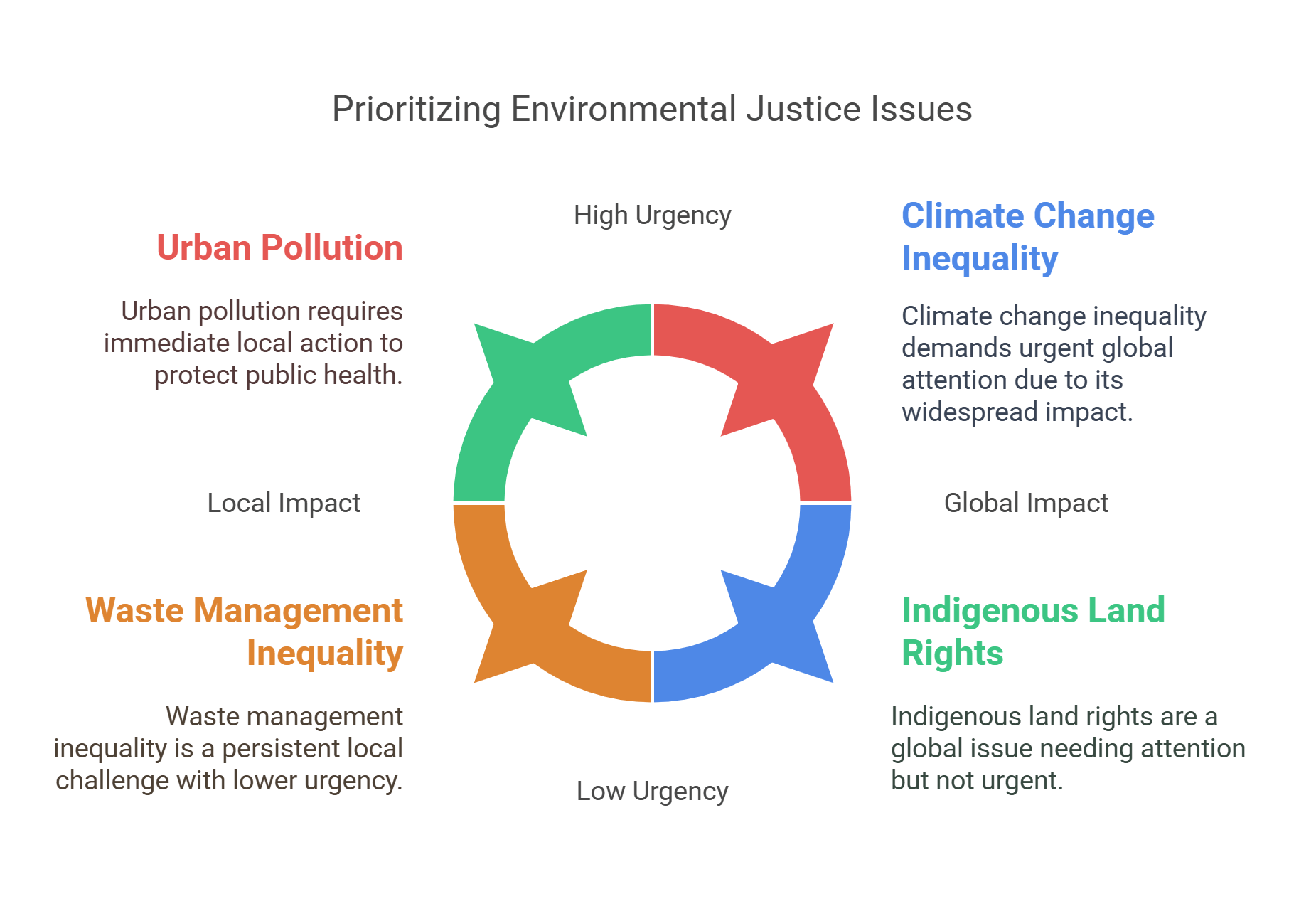
🔍 Detailed Explanations
1. Environmental Racism
Environmental racism refers to the disproportionate exposure of marginalized communities, particularly racial minorities, to environmental hazards like toxic waste, pollution, and industrial facilities. These communities often lack the political power to resist harmful practices.
- Key Characteristics:
- Placement of hazardous industries near low-income, minority neighborhoods.
- Limited access to clean water, air, and natural spaces.
- Underrepresentation in decision-making processes.
Examples:
- Flint, Michigan’s water crisis disproportionately impacted African-American residents.
- Toxic waste sites are more likely to be located near Indigenous reservations.
Explained Simply: Environmental racism is like putting the heaviest burdens on communities with the least resources to fight back.
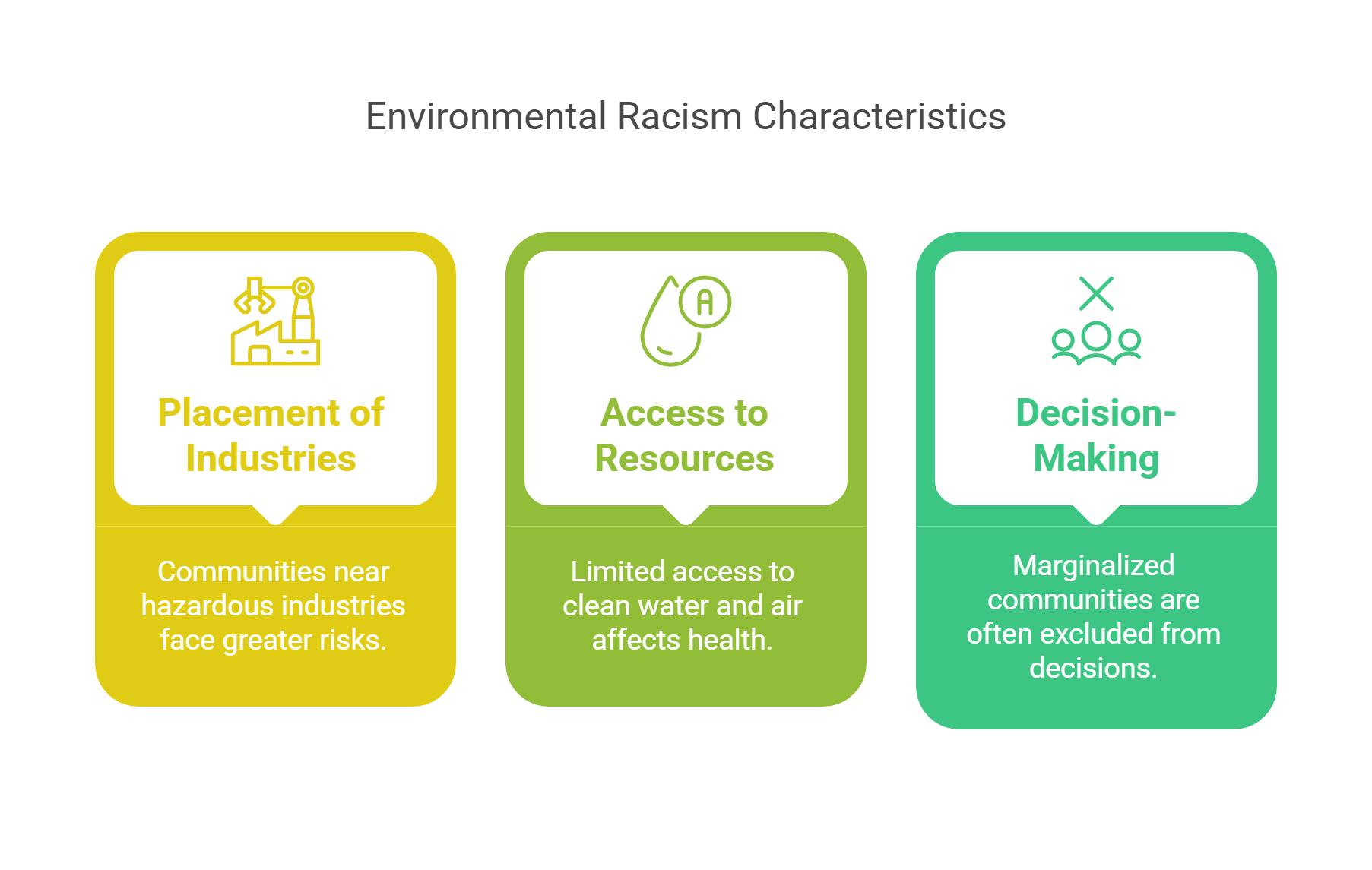
2. Climate Change Inequality
Climate change inequality examines how the impacts of global warming are unevenly distributed, with vulnerable populations bearing the brunt of extreme weather, sea-level rise, and resource scarcity.
- Key Issues:
- Developing nations contribute the least to emissions but face the greatest risks.
- Wealthy countries have more resources for adaptation, such as building resilient infrastructure.
Examples:
- Small island nations like Tuvalu face existential threats from rising sea levels.
- Droughts in sub-Saharan Africa exacerbate poverty and displacement.
Explained Simply: Climate change inequality is like the least responsible people paying the highest price for a shared problem.
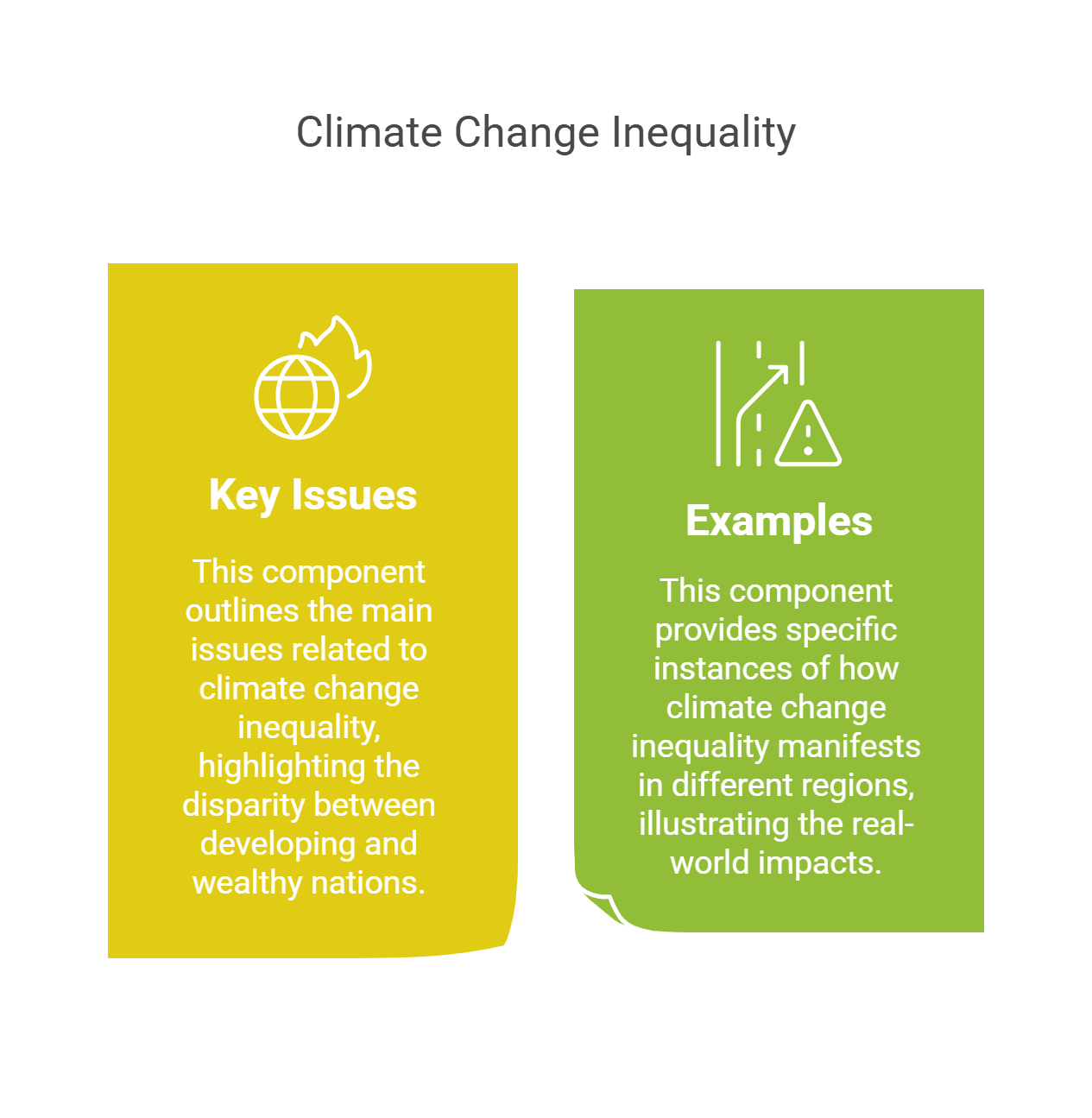
3. Indigenous Land Rights
Indigenous land rights focus on protecting the ancestral territories and cultural heritage of Indigenous peoples, who often act as stewards of biodiversity and natural resources.
- Key Principles:
- Sovereignty: Recognizing Indigenous self-determination over their lands.
- Conservation Role: Many Indigenous practices align with sustainable resource management.
- Challenges:
- Encroachment by mining, logging, and agricultural industries.
- Weak enforcement of treaties and land protections.
Examples:
- The Standing Rock Sioux Tribe’s opposition to the Dakota Access Pipeline highlighted threats to Indigenous lands and water sources.
Explained Simply: Indigenous land rights are like safeguarding nature’s guardians, who have lived in harmony with the land for generations.
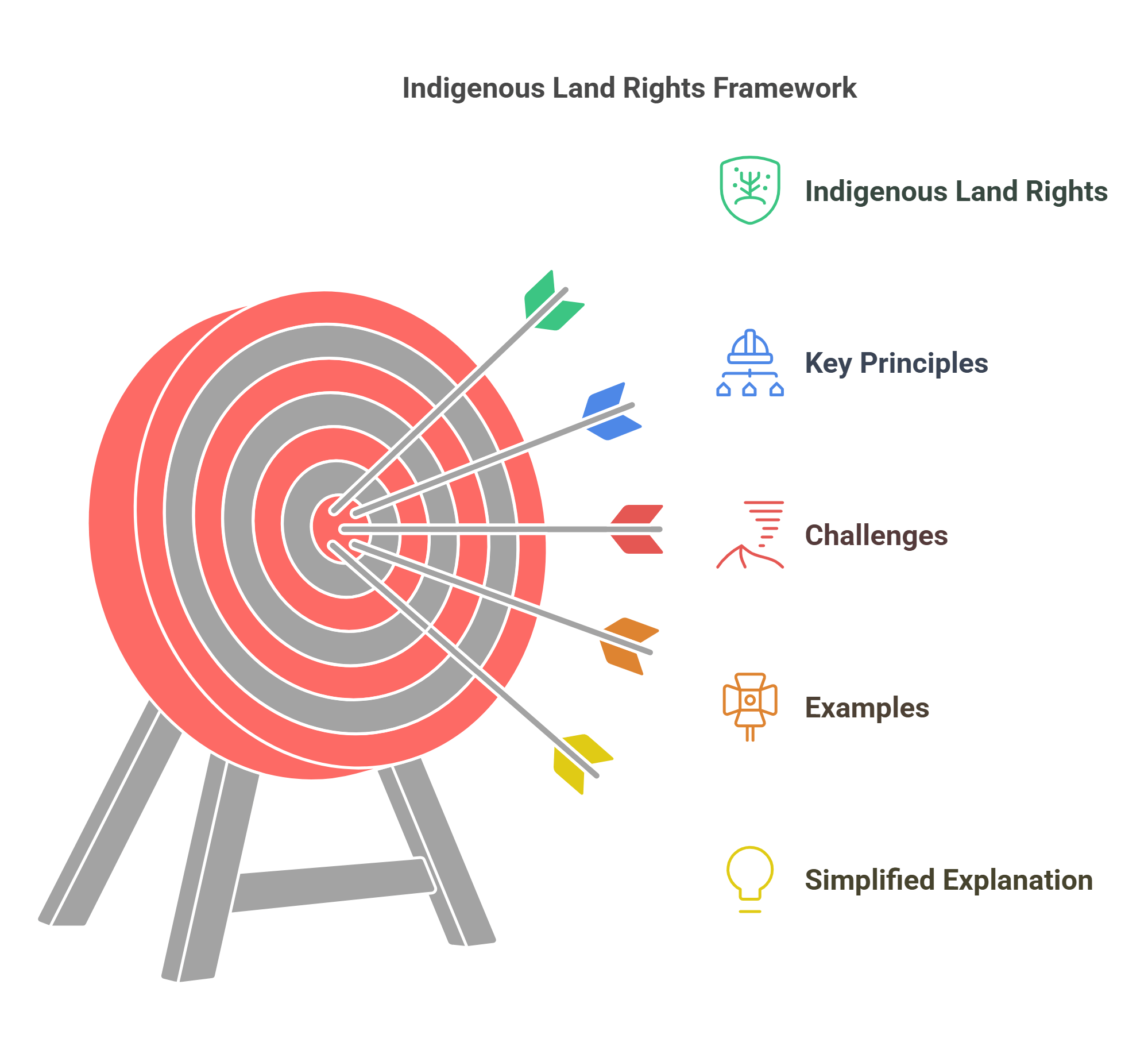
4. Urban Pollution
Urban pollution refers to the concentration of environmental pollutants in cities, disproportionately affecting low-income neighborhoods. Sources include vehicle emissions, industrial waste, and poor waste management.
- Key Impacts:
- Air Pollution: Contributes to respiratory diseases like asthma.
- Water Contamination: Industrial runoff pollutes urban waterways.
- Heat Islands: Lack of green spaces increases urban temperatures.
Examples:
- Inner-city residents often live closer to highways and factories, increasing exposure to toxins.
- Urban slums in developing countries face high levels of waste accumulation and contamination.
Explained Simply: Urban pollution is like adding extra weight to already burdened communities, making their environments less livable.
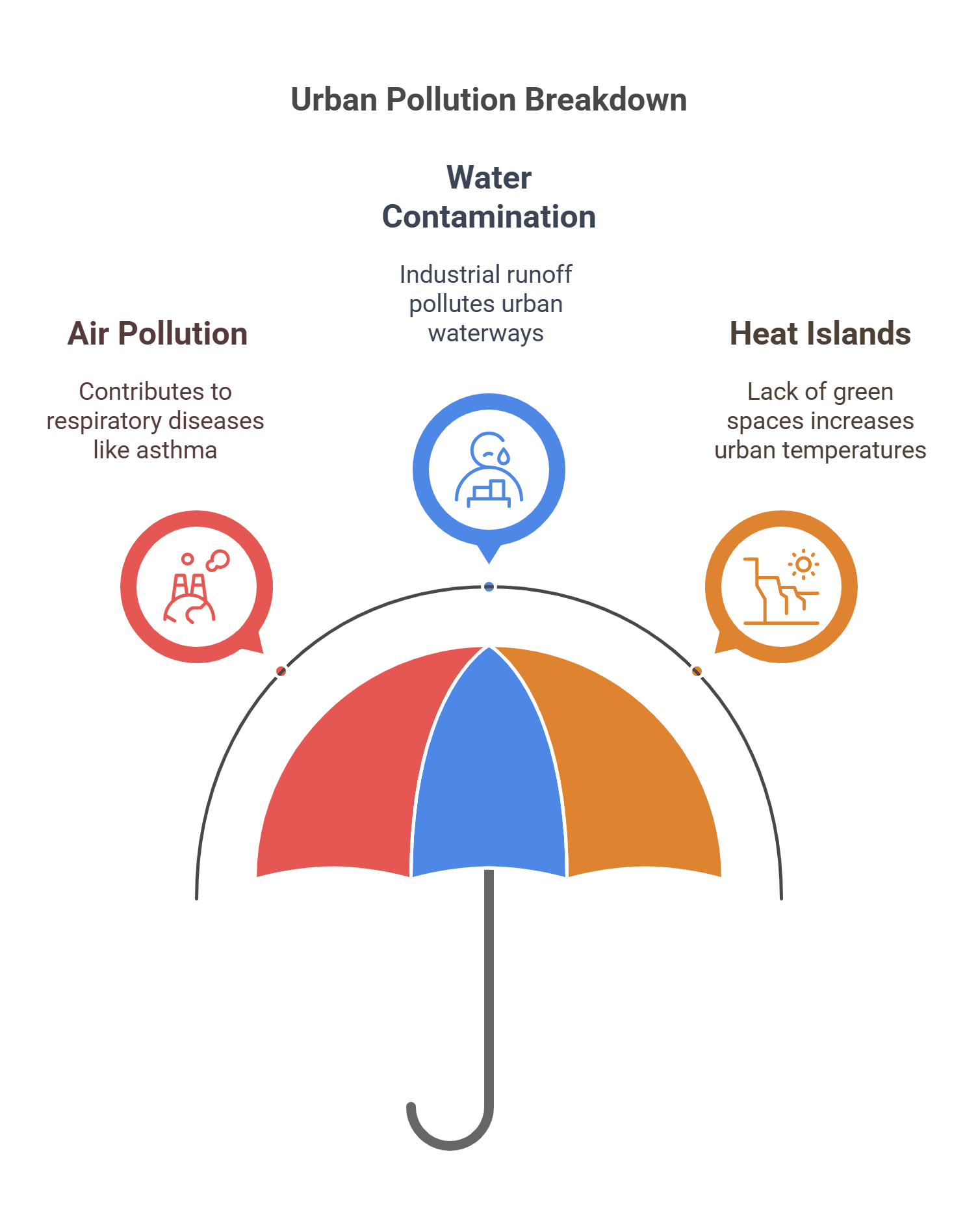
5. Clean Energy Access
Clean energy access ensures that all communities can benefit from renewable energy sources like solar and wind, reducing dependence on fossil fuels and addressing energy poverty.
- Key Benefits:
- Reduces greenhouse gas emissions.
- Lowers energy costs for low-income households.
- Promotes energy security and independence.
- Challenges:
- High upfront costs of renewable energy technologies.
- Unequal distribution of renewable energy infrastructure.
Examples:
- Programs like India’s Solar Saubhagya scheme aim to bring solar energy to rural areas.
- Community solar projects in low-income neighborhoods help reduce energy bills.
Explained Simply: Clean energy access is like sharing the sun’s power with everyone, ensuring no one is left in the dark.
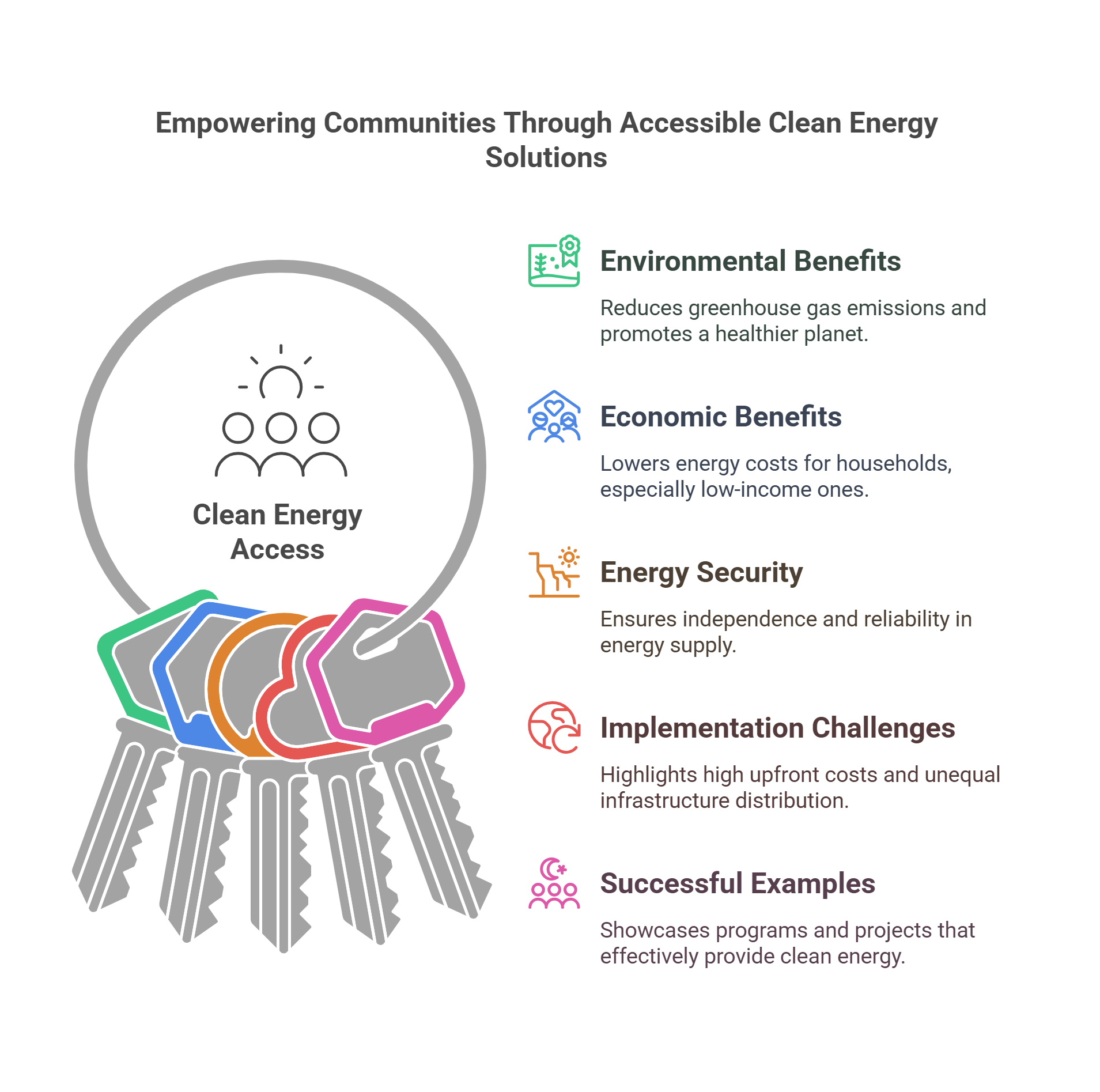
6. Waste Management Inequality
Waste management inequality refers to the unequal distribution of waste disposal facilities, recycling programs, and waste-related pollution, often burdening low-income and marginalized communities.
- Key Issues:
- Landfills and incinerators are disproportionately located in disadvantaged areas, leading to health risks.
- Limited access to recycling and waste reduction programs exacerbates environmental harm.
- Challenges:
- Political and corporate resistance to equitable waste management.
- Lack of investment in sustainable infrastructure for underserved communities.
Examples:
- Communities near the largest landfills in the U.S., like the Fresh Kills site in Staten Island, faced decades of environmental degradation.
- In many developing countries, waste pickers face hazardous conditions without protective measures.
Explained Simply: Waste management inequality is like leaving the trash in the backyards of those least able to clean it up.
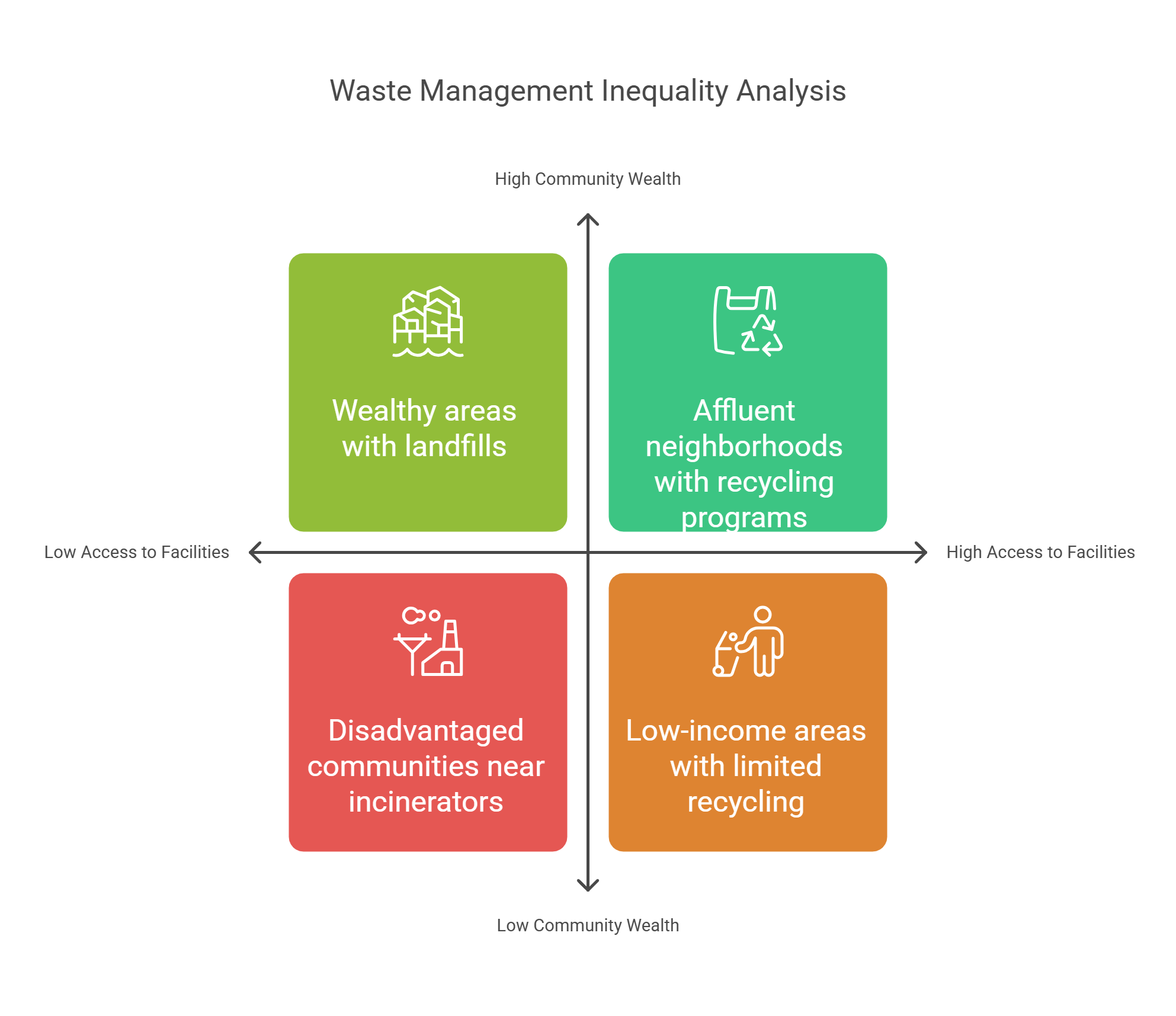
7. Global vs. Local Solutions
Addressing environmental justice involves balancing global strategies with local initiatives, recognizing that environmental challenges often require tailored approaches.
- Global Solutions:
- International agreements like the Paris Agreement target climate change through collective action.
- Global funding mechanisms (e.g., Green Climate Fund) support developing nations.
- Local Solutions:
- Community-led conservation projects, such as reforestation or urban greening.
- Policies tailored to specific local challenges, such as water scarcity or air quality.
Tensions:
- Global policies may overlook local cultural and economic contexts.
- Local initiatives may lack the resources to address broader systemic issues.
Explained Simply: Global and local solutions are like fixing both the roof and the foundation of a house to make it livable for everyone.
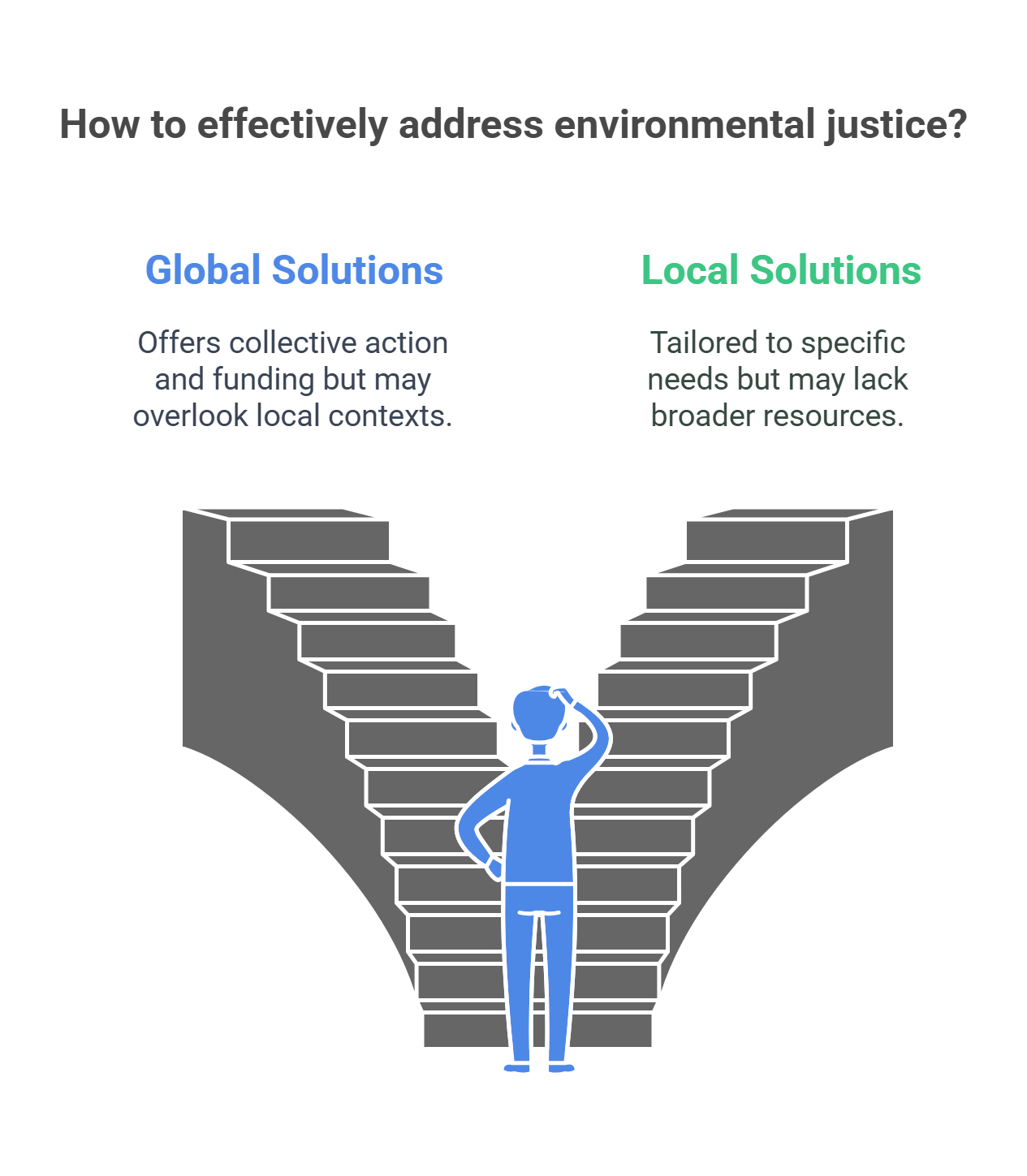
8. Ecosystem Restoration
Ecosystem restoration focuses on repairing degraded ecosystems to restore their biodiversity, functionality, and resilience. It is vital for addressing environmental injustice, as degraded environments often harm marginalized communities the most.
- Key Methods:
- Reforestation: Planting trees to combat deforestation and soil erosion.
- Wetland Restoration: Reviving wetlands to improve water filtration and flood control.
- Urban Restoration: Greening cities to reduce heat islands and improve air quality.
- Benefits:
- Enhances carbon sequestration, mitigating climate change.
- Restores habitats for endangered species.
- Improves community health and resilience to environmental stressors.
Example: The Great Green Wall initiative in Africa aims to restore degraded land across the Sahel region, benefiting both people and ecosystems.
Explained Simply: Ecosystem restoration is like healing the scars of nature, ensuring healthier environments for everyone.
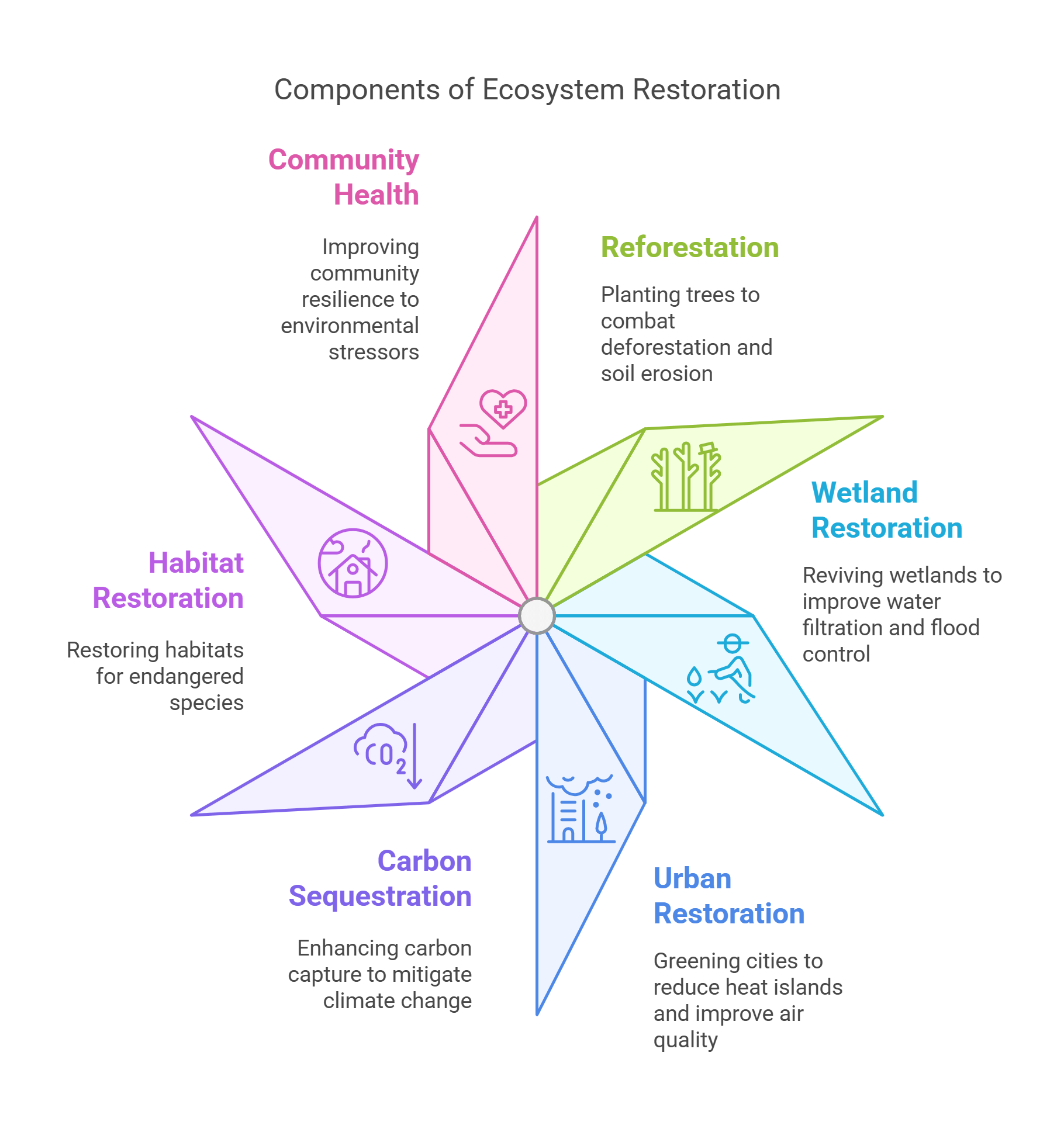
9. Policy Advocacy
Policy advocacy involves efforts to influence legislation, regulations, and policies to promote environmental justice and equitable resource distribution. It often focuses on amplifying the voices of underrepresented communities.
- Key Strategies:
- Lobbying for stronger environmental protections and enforcement.
- Raising public awareness through campaigns and media.
- Supporting grassroots movements and citizen engagement.
Examples of Success:
- The Clean Air Act in the U.S. reduced air pollution and disproportionately benefited urban communities.
- The Land Back movement advocates for restoring Indigenous control over ancestral lands.
Explained Simply: Policy advocacy is like building a megaphone for marginalized communities, ensuring their needs are heard and addressed.
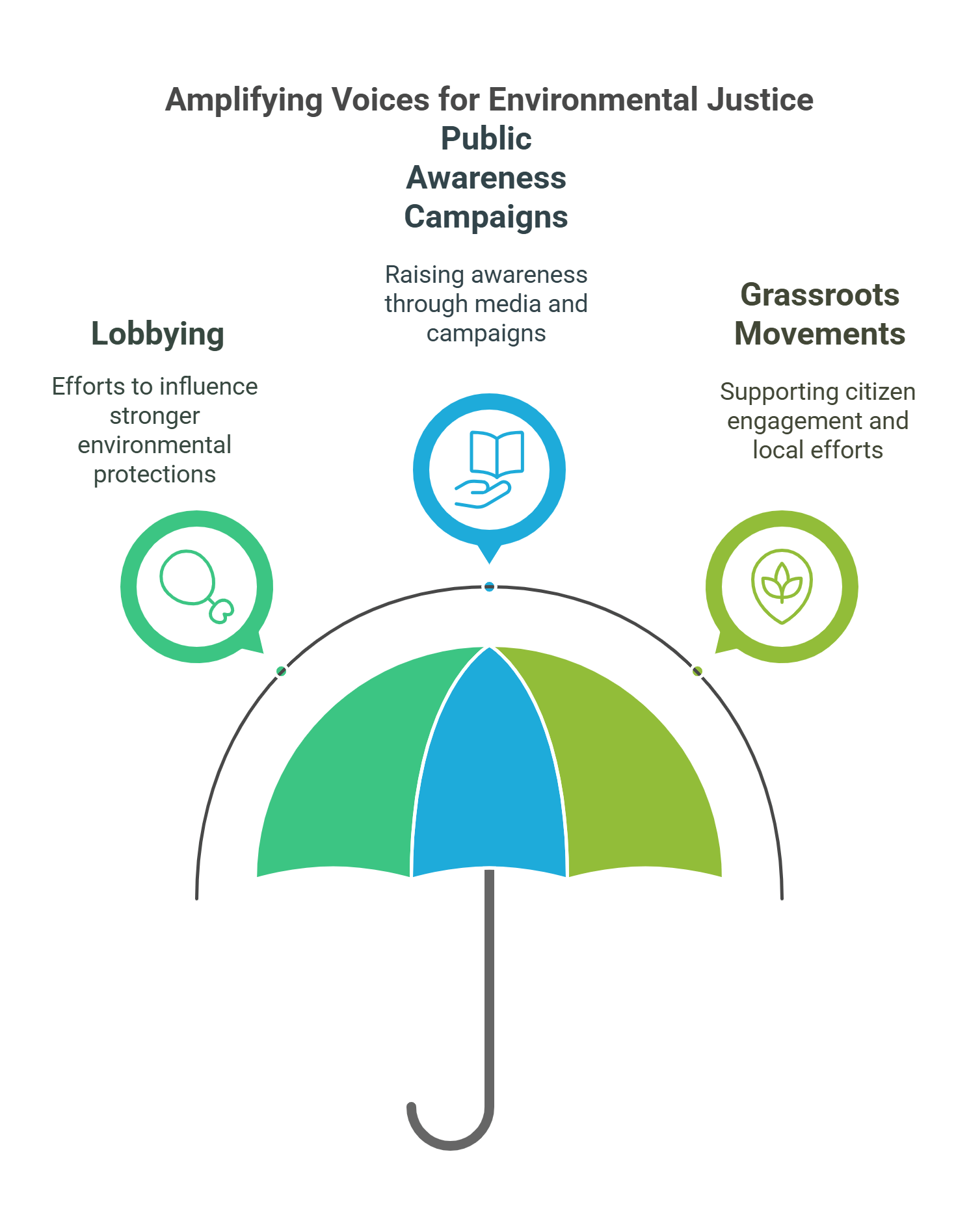
10. Sustainable Agriculture
Sustainable agriculture promotes farming practices that balance productivity with environmental and social responsibility. It addresses food security, resource use, and the rights of small-scale farmers.
- Key Principles:
- Soil Health: Practices like crop rotation and organic farming reduce soil degradation.
- Water Efficiency: Drip irrigation and rainwater harvesting conserve resources.
- Fair Trade: Ensures equitable treatment and compensation for farmers.
- Challenges:
- Industrial farming practices often prioritize profit over sustainability.
- Small farmers face competition from large agribusinesses, limiting access to markets.
Examples:
- Agroforestry integrates trees and crops, enhancing biodiversity and carbon storage.
- Urban farming initiatives provide fresh produce to food-insecure communities.
Explained Simply: Sustainable agriculture is like growing food with care for both the earth and the people who depend on it.
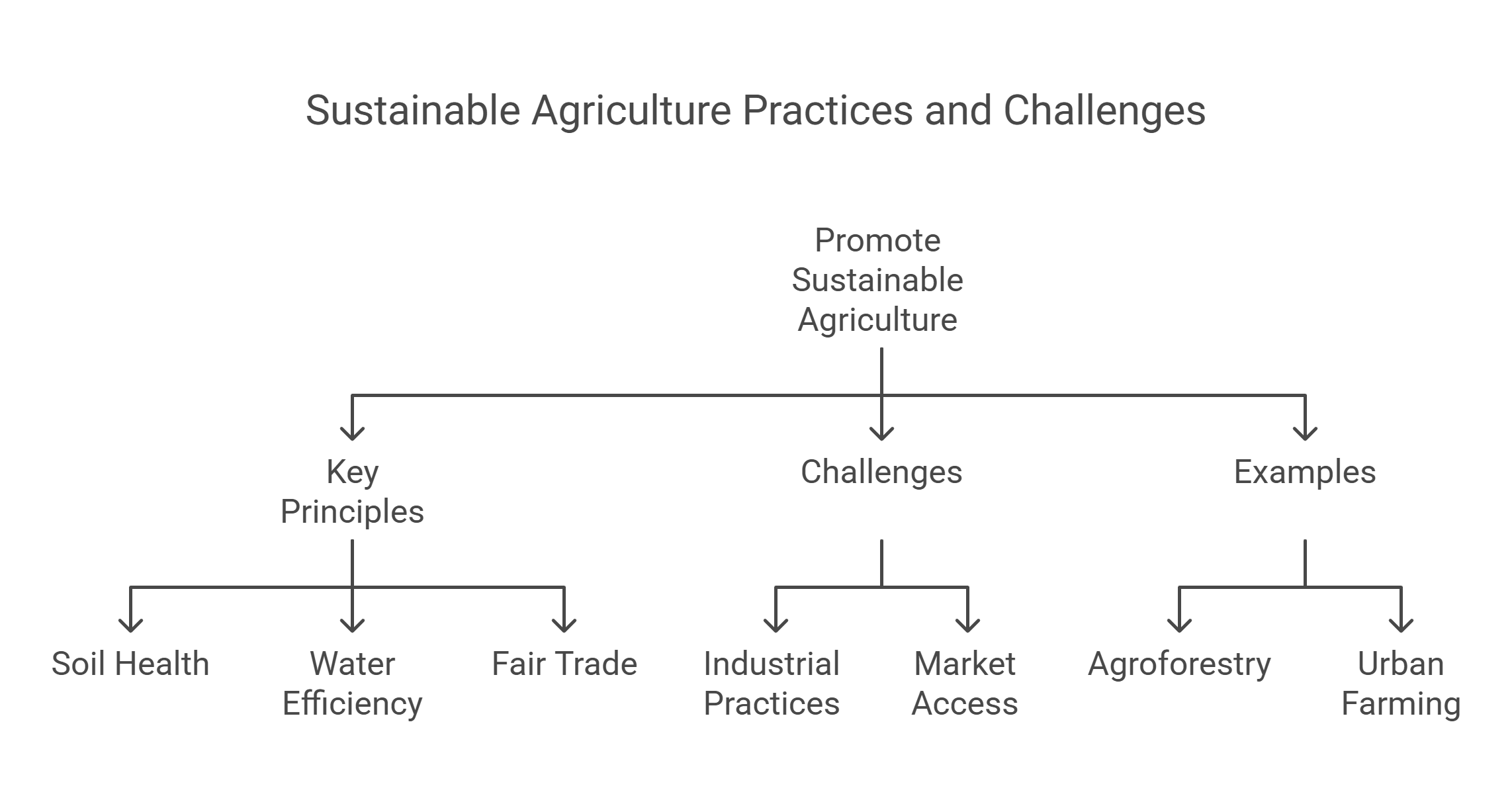
✨ Conclusion
Environmental justice highlights the intersection of social equity and environmental stewardship, emphasizing the need for inclusive solutions to global challenges. By exploring concepts like waste management inequality, ecosystem restoration, and sustainable agriculture, readers can critically analyze RC passages and appreciate the transformative potential of justice-driven environmental policies.










